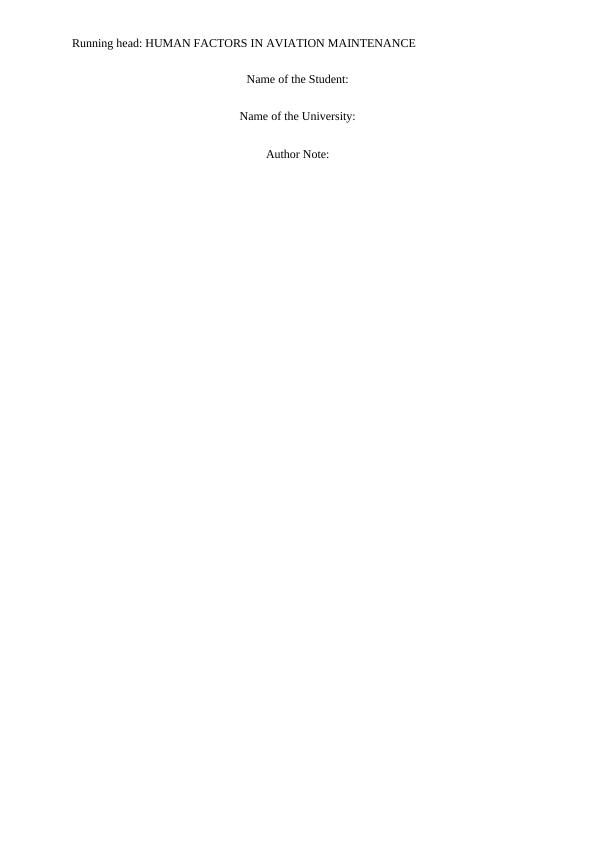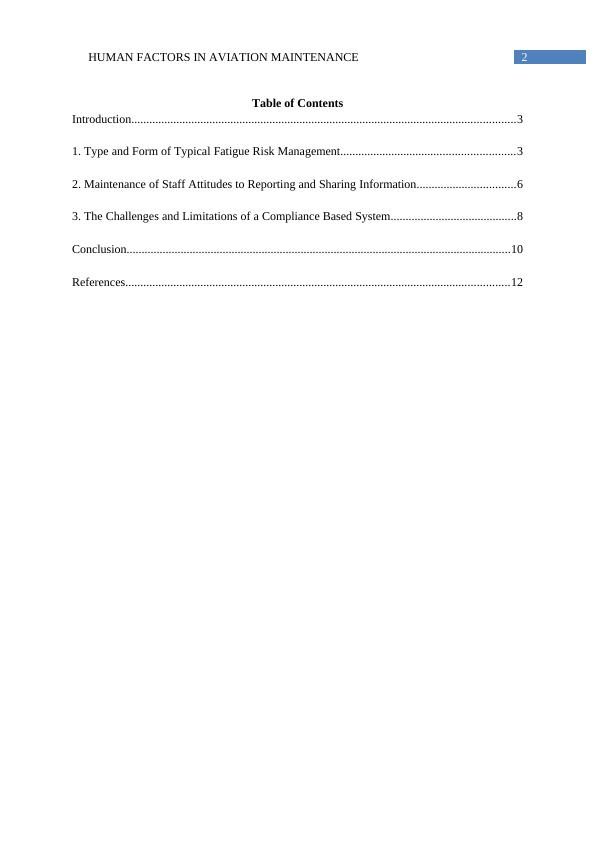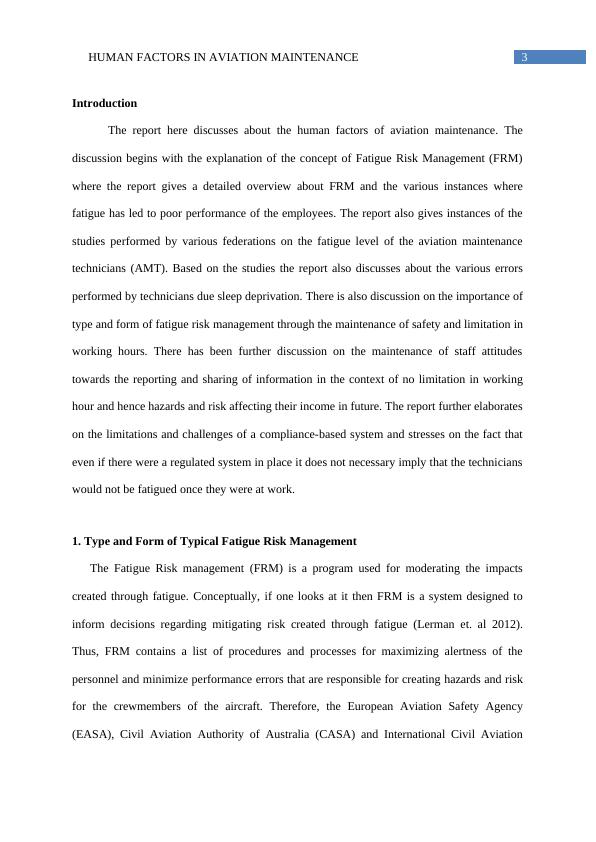Ask a question from expert
7514NSC - Human Factors in Aviation Maintenance Report
Griffith University
Human Factors for Aviation Managers (7514NSC)
Added on 2020-03-01
About This Document
This report gives a brief overview of the human factors of aviation maintenance. There is a discussion on the concept of fatigue risk management (FRM) with an elaboration on the various instances of fatigue that led to poor performance. This report also discusses the importance of type and form of fatigue risk management through the maintenance of safety and limitation in working hours. This report also discusses the limitations and challenges of a compliance-based system by stressing the fact that a regulated system in place does not necessarily imply that the technicians would not be fatigued once at work.
7514NSC - Human Factors in Aviation Maintenance Report
Griffith University
Human Factors for Aviation Managers (7514NSC)
Added on 2020-03-01
End of preview
Want to access all the pages? Upload your documents or become a member.



